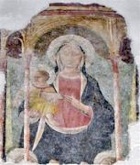p
Bartolomeo di Tommaso was born in Foligno, but he spent his early years in Ancona, where he was documented for the first time in 1425. He seems to have been valued by Corrado Trinci, Lord of Foligno: a commission in 1434 stipulated that he was free to return to Foligno for up to 15 days, should Corrado Trinci call him. However, he lived in Ancona until 1442, when he returned to Foligno after his marriage to the young Onofria, the sister of Pierantonio Mezzastris. In the following four years, two of their four children died, followed by Onofria herself in died in 1447.
Bartolomeo was documented in Norcia in 1442, in a group of painters at work in the choir of Sant’ Agostino that also included: the Sienese Nicola di Ulisse; the German Luca di Lorenzo; Giambono di Corrado da Ragusa; and Andrea de Litio. Pope Nicholas V called him to Rome in 1451 to work on the Campidoglio the Palazzo Vaticano.
Bartolomeo was very influential in his lifetime, but later ignored by critics. However, his distinctively expressionistic style has commended him to modern scholars.
Foligno
San Salvatore Polyptych (1432)
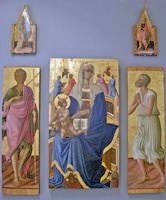

Detail of main panel
Prior Rinaldo Trinci commissioned this documented polyptych for the high altar of San Salvatore. It was moved to the Altare dei SS Simone e Guida in 1662. The panels that remain in Foligno (illustrated above) are now in the Museo Diocesano.
-
✴The central panel depicts the Madonna and Child enthroned, with a tiny figure of the kneeling Prior Trinci (bottom right, illustrated above).
-
✴The panels to the sides depict St John the Baptist and the Blessed Peter Crisci.
-
✴The panels from the top register exhibited in the museum depict SS Bartholomew and Ursula.
Four other panels were sold in 1825.
-
✴One of them, which was the central panel in the top register, has been lost.
-
✴The other three, which formed the predella, have been identified as:
-
•Christ’s agony at Gethsemane, in the Pinacoteca Vaticana, Rome;
-
•the road to Calvary, in the Musée du Petit Palais, Avignon; and
Flight into Egypt (ca. 1432)
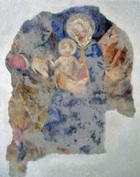
Martyrdom of St Barbara (1449)
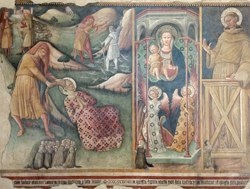
This composite fresco from Santa Caterina Vecchia, which is signed by Bartolomeo di Tommaso and dated, was probably commissioned in thanks for the delivery of the city (or perhaps the donor) from the plague. It was detached in 1873 and is now in the Pinacoteca Civica.
-
✴In the main scene, Santa Barbara is scalped and a group of kneeling nuns bear witness while shepherds survey a plague of locusts in the background.
-
✴The subsidiary scenes depict:
-
•the Madonna di Loreto with angels; and
-
•St Antony of Padua.
-
In each of these, a single kneeling nun (presumably the donor) says her rosary.
Crucifixion (15th century)
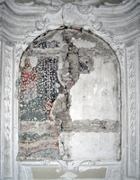
Madonna di Loreto (15th century)
Cascia
The ruined frescoes (ca. 1445) of the Adoration of the Shepherds, the Trinity and St Benedict in San Francesco are by Bartolomeo di Tommaso.
Gualdo Tadino
Fresco Fragments ( ca. 1447)
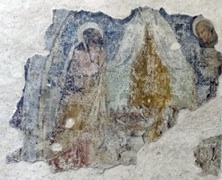
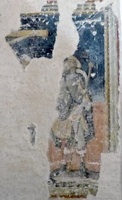
These fresco fragments in Santa Maria dei Raccomandati, which were rediscovered in the restoration of 2009, are attributed to Bartolomeo di Tommaso, partly on stylistic grounds but also on the basis of a payment made to him for a now-lost altarpiece by the Confraternita di Santa Maria dei Raccomandati in 1447. The surviving fragments depict:
-
✴the Madonna della Misericordia with SS James and Bernardino of Siena and members (male and female) of the confraternity, on the right wall, near the counter-facade; and
-
✴the Crucifixion (almost completely lost) and St Roch.
Terni
Last Judgement (ca. 1449)
[Frescoes of the Cappella Paradisi, San Francesco]
Read more:
M. Sensi, “ Documenti per Bartolomeo di Tommaso da Foligno”, Paragone 325 (1977) 103-156
Return to Art in: Cascia Foligno Gualdo Tadino Terni.



